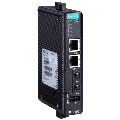Breaking Communication Barriers - For effective solar monitoring

Performance monitoring has long been an important topic of solar energy build-up. Designing a monitoring system, however, can be challenging. Until recently, it involved integrating recording equipment from other industries that didn’t necessarily relate to the issues faced by renewable energy projects.
Most monitoring system providers, for instance, use traditional remote terminal units (RTUs) or dataloggers for I/O data acquisition. These dataloggers and RTUs are, typically, designed for specific applications (such as for the water/wastewater or the power industries) where they have their own standards.
Most of the industry-specific RTUs and dataloggers support special protocols, including DNP 3.0, Modbus, and other automation-based Fieldbus protocols. Generally, these products come with those protocols out of the box, which make them easy to be used in that particular market.
However, when it comes to solar monitoring, there are many solar energy equipment manufacturers. And, every single one of them might use different protocols to talk to their logger devices. This makes it extremely difficult for solar monitoring engineers because the dataloggers and RTUs won’t support an open programming environment to build drivers. This is important and required to properly communicate with equipment, such as the solar inverters or the weather-base stations.
As a result, system engineers have to rely on the datalogger and RTU providers to build a driver, which can be unstable and expensive.
The new monitoring solution
As an alternate solution to drivers, an increasing number of solar energy monitoring builders are starting to opt for ARM-based computing platforms for their dataloggers and RTUs. ARM-based platforms are based on a reduced instruction set of computing architecture. They are not only cheaper, but also more flexible.
For instance, ARM-based computing platforms:
Typically come with open-source Linux OS, renowned for its bountiful-free coding resources on the Linux communities that make it extremely easy to code and develop user applications;
Tend to be more cost effective when compared to traditional dataloggers and RTU;
More easily expand network interfaces, especially Wi-Fi and cellular; and
Offer more central processing unit (CPU) power compared to the RTUs and dataloggers.
When choosing an ARM-based platform for solar monitoring, there are a few key points that deserve special attention. Ideally, these devices should come with:
- An expansion slot that’s available for different wireless interfaces (most of the wireless cards now use Mini PCIe as the standard interface);
- The most up-to-date Linux OS, ideally Debian ARM because of its openness and ease of use;
- An industrial rating. Note: many ARM-based CPU boards are readily available in the market at a low price, but aren’t industrial-rated—which can result in shorter product life cycles that aren’t likely to survive the high and low fluctuating temperatures of solar applications;
- Ready-to-use protocol sample codes to build the device drivers around;
- An ability to use the sample codes for WAN communication back to the central servers—a good platform should make it easy for a programmer to build their software applications, without having to worry about what protocol stacks they have to built by themselves (this will also speed up the time needed to install the product in a live environment); and
- Easy-to-expand I/Os, especially digital and analog ones.
A case study
Over the past few years, numerous solar energy monitoring solution providers have migrated from close-ended datalogger and RTU solutions to an open, ARM-based computing platform. It’s not tough to see why in the following example.
In this situation, the solar energy monitoring system builder used a ready-to-run datalogger that had I/Os. The biggest problem that arose related to the inflexibility of the protocols the datalogger supported. So, every time this company’s customers had new equipment that used a different protocol, the integrators had to contact the datalogger manufacturer, requesting that a new driver be built for them—wasting time and money.
It’s also worth noting that most dataloggers don’t have options for cellular expansion for long-distance communication. This is an issue for remote solar power projects, resulting in an extra expense whenever a cellular router must be added to the mix.
However, after migrating to an ARM-based computer, this company has the ability to simply insert a cellular card for 3G and 4G communication. The ARM-based computer, in this case, was also equipped with Debian 7 Linux, which supports on-device compiling. This allows the user to build device drivers all by themselves without contacting a datalogger manufacturer.
Ultimately, the ARM-based solution has cut their spending on custom driver development fees by over half, and has reduced their overall hardware spending by more than 30%.
Project monitoring has come a long way in the solar industry. New technology can ensure renewable projects—and, especially those built in remote locations—don’t have additional and unnecessary expenses when it comes to performance.
Daniel Liu is the Business Development manager for Moxa Americas, Inc.
Moxa Americas, Inc. | www.moxa.com
Author: Daniel Liu
Volume: March/April 2015









.gif?r=3130)
.jpg?r=7559)
.jpg?r=5645)
